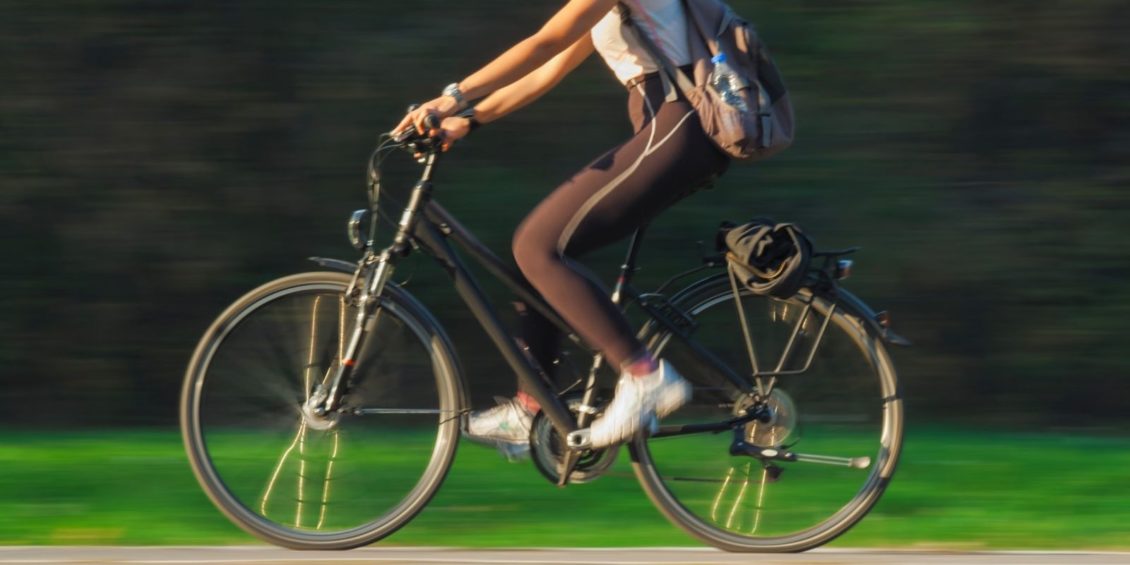As part of the biggest assessment of UK walking, wheeling and cycling, a new report has shown that women and people on lower incomes are less likely to engage in active travel in Cardiff.
Sustrans’ Walking and Cycling Index has found several notable differences in the levels of walking and cycling among certain demographic groups.
The study, the first of its kind for national urban areas, confirms that only 16% of women in Cardiff cycle at least once a week compared to 30% of men.
While people in Cardiff walk or wheel more frequently than any other form of transport – 53% of all residents surveyed walked at least five days a week – only 36% of people classed as working in skilled manual labour indicated that they did the same.
The same group, along with those in semi-skilled and unskilled roles or in unemployment, recorded the lowest participation levels for cycling at least once a week among residents of the city (20% and 18%, respectively).
Locality and income certainly play a role in people’s engagement in active travel.
80% of residents belonging to the most affluent socio-economic groups said they felt welcome and comfortable spending time on the streets of their neighbourhood, compared to 59% of those at the opposite end of the spectrum.
Splott resident Claire Lordan highlighted the differences in the environment between more affluent and more deprived areas as a factor that affects people’s reasons for engaging in walking, wheeling and cycling. She wants to see “more green space, trees and better pavements for less affluent areas”
Whilst inequality of access and use of active travel persist, there remains widespread support for initiatives to make walking, wheeling and cycling easier and safer, such as low traffic neighbourhoods, more segregated cycle lanes and more 20mph zones.
Christine Boston, Director of Sustrans Cymru, said:
“We know that it is the most vulnerable and disadvantaged members of our society who contribute the least and yet suffer the most from the negative impacts of road traffic, whilst also facing higher barriers to accessing affordable and active transport.
“There are widespread benefits to more people engaging in active travel, both on a personal level and in the wider global context. We know that a shift to more sustainable methods of transport is key in Cardiff’s plans to be carbon neutral by 2030.
“There are challenges, without question, as to how Cardiff can achieve its goal of becoming a thriving, resilient and low-carbon city, powered by active travel. This year’s Walking and Cycling Index displays a clear picture of where the city is now, as well as outlining a positive direction of travel for the future.
“We will continue to work with Cardiff Council and community members across the city in helping to achieve this vitally important goal. I would like to thank the 1,319 Cardiff residents who took the time to fill out the survey that produced this report.”
Confidence in cycling, unequal participation
Overall in Cardiff, the number of people cycling has increased since the pandemic started (up from 43% to 46%).
Perceptions of cycling safety in the city have improved since the previous report in 2019, with 46% of all residents cycling and 45% of residents thinking their local area overall is a good place to cycle.
Participation, though, is not equal – many different demographic groups reported low uptake in cycling:
- 19% of people from ethnic minority groups (compared to 24% of white people)
- 16% of women (compared to 30% of men)
- 22% of people aged 56-65 (compared to 31% of people aged 16-25)
- 18% of disabled people (compared to 25% of non-disabled people)
- 18% of people on lower incomes (compared to 23% of people on higher incomes)
Improved cycling infrastructure could change this reality for those groups of Cardiff’s population.
Sustrans’ report found many Cardiff residents want to see positive changes to the cycling resources on offer in the city.
75% said that more traffic-free cycle routes away from roads would help them to cycle, 73% said that they wanted more signposted local cycle routes along quieter streets, and 69% want better cycling links with public transport services.
Active travel’s role in fighting climate change
Walking, wheeling and cycling can help to tackle the climate emergency – every day in Cardiff walking and cycling trips are taking up to 99,000 cars off the road.
However, 63.7 million journeys up to 3 miles are driven in Cardiff each year, underlining the fact that car dependency is something that has yet to change.
If 80% of these journeys were walked or cycled, it could save approximately 21,000 tonnes of greenhouse gas emissions in a capital city that has declared a climate emergency.
Based on walking and cycling by residents that live in a household with a car.









Leave a Reply
View Comments